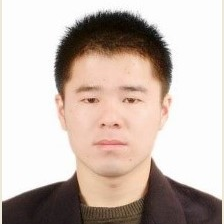Electromagnetic Transients in Large-Scale Renewable Energy System: Model, Method, Simulation, Measurement and Suppressing Techniques
A special issue of Energies (ISSN 1996-1073). This special issue belongs to the section "B2: Clean Energy".
Deadline for manuscript submissions: closed (31 August 2022) | Viewed by 7757
Special Issue Editor
Interests: electromagnetic transients in power system; high voltage engineering; renewable energy
Special Issues, Collections and Topics in MDPI journals
Special Issue Information
Dear Colleagues,
Renewable energy is increasingly integrated into modern power grids to meet the rising demand for electricity. Many countries have set goals to operate at 100% clean energy and zero-carbon emission by 2050. However, large-scale renewable energy systems are frequently subject to serious electromagnetic transients, such as lightning surge, fault and switching overvoltages, etc. For instance, wind turbines are often struck by lightning due to their height, distinctive shape, and exposed location; photovoltaic systems as equally vulnerable due to being installed in huge, wide open areas. High transients can decrease PV cell efficiency, threaten power converters, and even lead to the failure of the entire system. The mechanism of such transients needs to be thoroughly understood, validated, and evaluated.
This Special Issue provides an opportunity for researchers to share their latest discoveries and best practices in this field. The aim is to present selected contributions on advances in modeling, simulation, measurement, and suppressing techniques for electromagnetic transients in the system. Potential topics include but are not limited to:
• Wind power and photovoltaic systems;
• Modeling of power converters and associated equipment;
• Lightning surge and protection;
• Switching transient and mitigation;
• Fault transient and location;
• High-frequency transient mechanism;
• Smart sensors for electromagnetic transient measurement;
• Novel suppressing techniques for transients in renewable energy systems;
• Numerical simulation of electromagnetic transients in renewable energy systems;
• Transient in energy storage systems.
Dr. Qiuqin Sun
Guest Editor
Manuscript Submission Information
Manuscripts should be submitted online at www.mdpi.com by registering and logging in to this website. Once you are registered, click here to go to the submission form. Manuscripts can be submitted until the deadline. All submissions that pass pre-check are peer-reviewed. Accepted papers will be published continuously in the journal (as soon as accepted) and will be listed together on the special issue website. Research articles, review articles as well as short communications are invited. For planned papers, a title and short abstract (about 100 words) can be sent to the Editorial Office for announcement on this website.
Submitted manuscripts should not have been published previously, nor be under consideration for publication elsewhere (except conference proceedings papers). All manuscripts are thoroughly refereed through a single-blind peer-review process. A guide for authors and other relevant information for submission of manuscripts is available on the Instructions for Authors page. Energies is an international peer-reviewed open access semimonthly journal published by MDPI.
Please visit the Instructions for Authors page before submitting a manuscript. The Article Processing Charge (APC) for publication in this open access journal is 2600 CHF (Swiss Francs). Submitted papers should be well formatted and use good English. Authors may use MDPI's English editing service prior to publication or during author revisions.
Keywords
- renewable energy
- electromagnetic transient
- numerical simulation
- power converter
- smart sensor and measurement
- high-frequency transient
- energy storage





